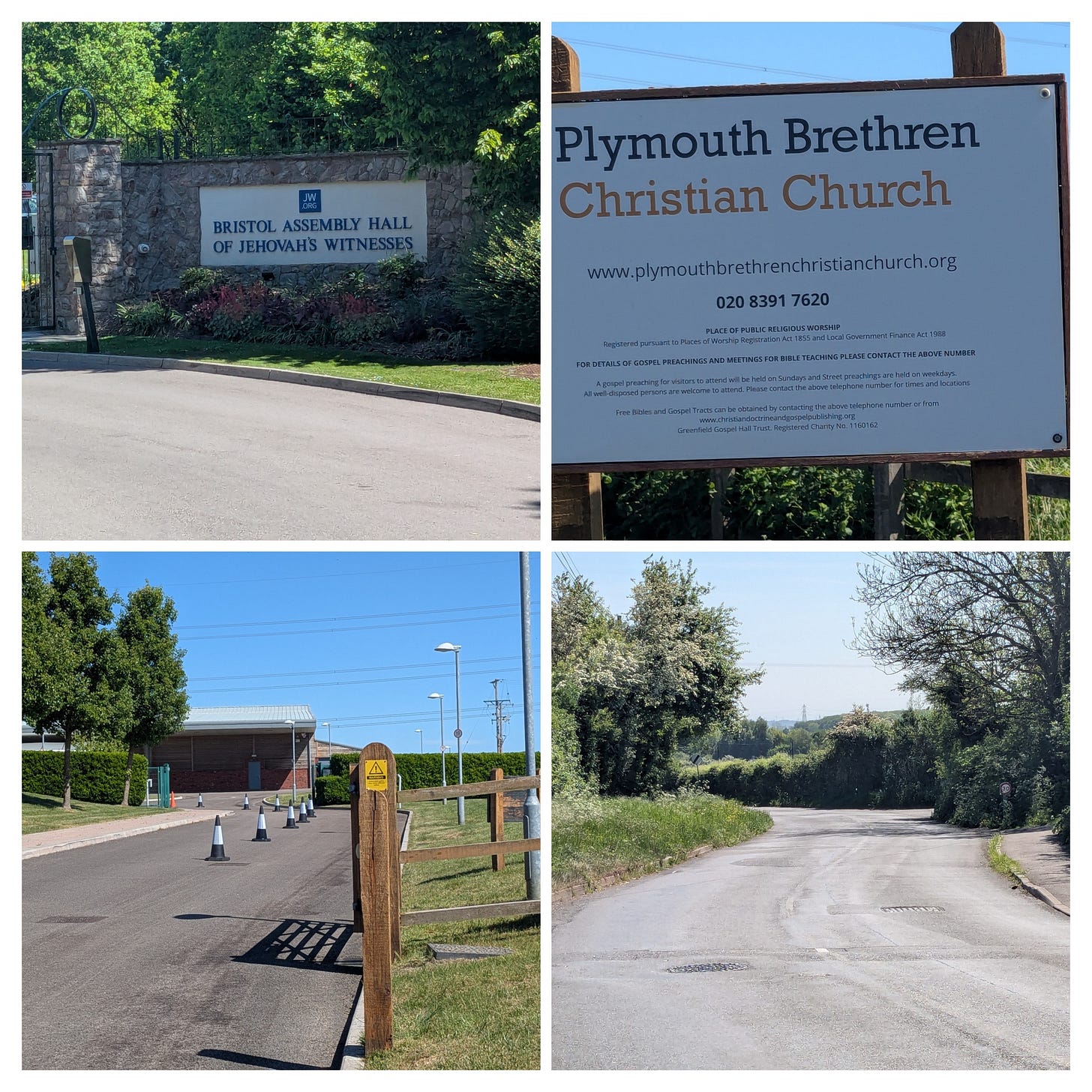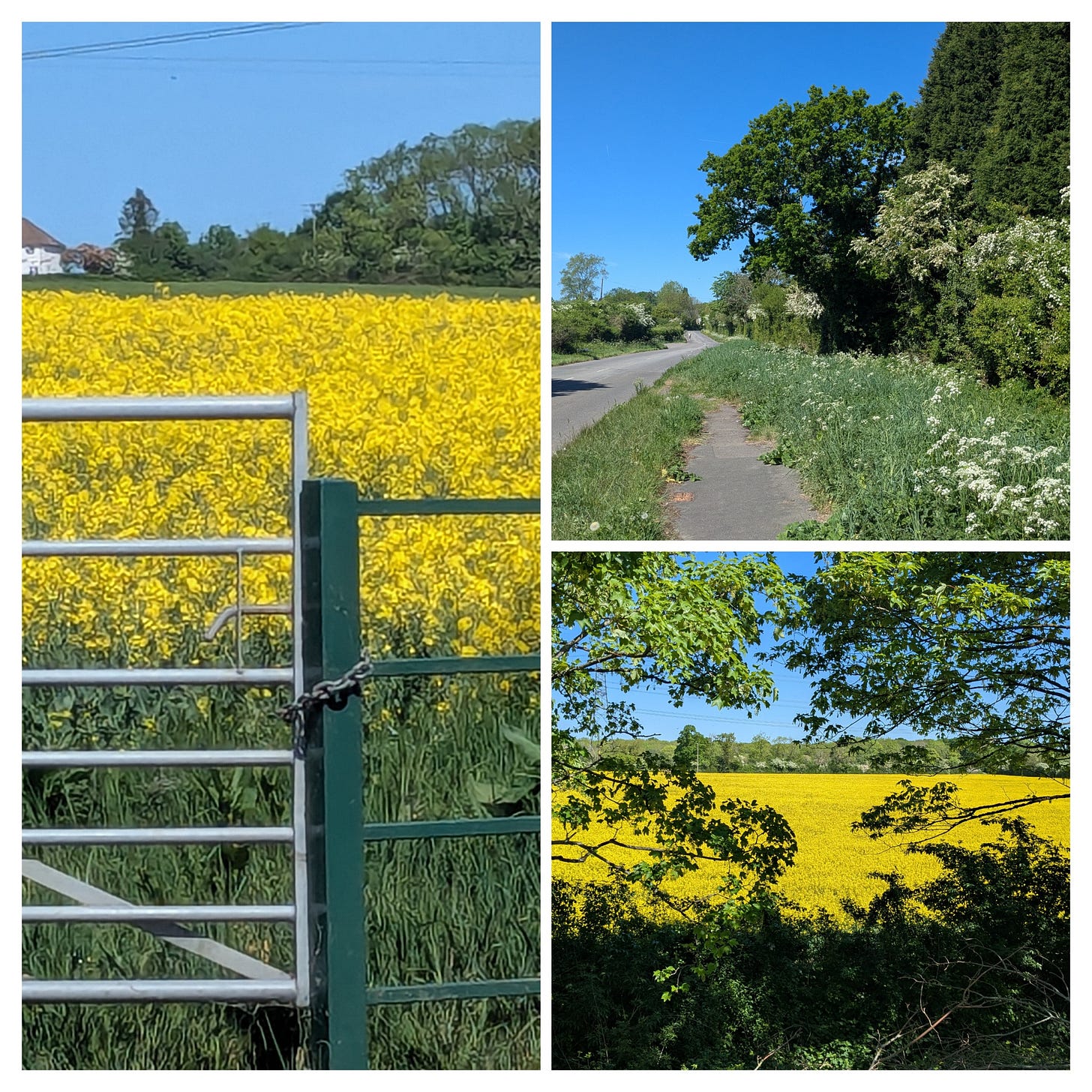It sounds like some place in a Harry Potter book. It should be. I've been entranced by this place name since I was a little kid absorbed in the magic of maps. It hasn't moved location but it was far more remote back then and until a recent decade or so - to a non car owner/driver that is. And how hum,I didn't have a nice boyfriend to take me there,you can say that again. But with the growth of urban sprawl and bus routes altered over time to serve these places so other places like this magically named place get within a reasonable walk distance. Now you may be wondering why is this place called Gaunts Earthcott and what does this wizardy incantatory name mean. Well,I only learned a few months ago. A “Gaunt” is a Badger. It's an Anglo/Saxon +Olde Englishe word for a Badger. And of course the Earthcott is the Badger Sett. So there must have been a huge significant size Badger Sett at this place for it to gain that very name. I'm sure it is still badger country round here. We have gone TOO FAR the other way in our Sentimentalising of these creatures. They need rational control in order to keep our farmed land in harmony. They can trash the most beautiful garden. Watch one of lovely Bunny Guinnesses YouTubes in which she describes soon going off the night visitors and installing electric fences to keep them out. Or there go the carrots,the dahlias,the roses,the…in one of his many books the late Phil Drabble describes how any one of his evening badger visitors could at a whim rip the leather sofa cover off with one claw swipe. That's the thing about loving nature. They haven't read the bit about how they are at risk and vulnerable. Like most real ‘poor people' ignore the directive to be grateful for small mercies,lol
I got the Thornbury bus from Central Bristol and started at Hortham Lane off the A38 just past the motorway bridge over the M4 near the Almondsbury “Cloverleaf” interchange. It was easier to cross this busy road thanks to the roadwork obstructions. I set off down the lane
Hortham was never a village but is now I see a pleasant,very clean and tidy and rather upmarket suburban place. There used to be a big psychiatric hospital here many years ago but naturally it was sold off for development. Nowadays people with serious psychiatric issues get to sleep in a shop doorway and beg. It's called ‘Care In The Community',an ironic name as The Community DONT CARE. Im in some ways a member of The Community -when any paying out is involved - and I don't care. And the Community don't CARE about me but would like to burn me at the stake. That's how it is in reality. The alternatives are Emotional Blackmail or Weaponised Compassion. I discovered that this clean,smart,shiny place with a slight Stepford Wife ambience about it is now the HQ of both the Bristol area Jehovahs Witnesses at one end of the village and the local Brethren at the other. That explains the creepy vibes!
I carried on down the lane. I was now on Gaunts Earthcott lane but not yet at actual G.E,it was exhilarating to see some yellow fields,they're much less often seen now since the use of neonics was banned on spurious science “results”,all my eye and Betty Martin,now the Flea Beetle can decimate crops and make it not worth the farmers while to grow. And black grass destroys the viability of other crops. But DEFRA is now manned by 12 year olds who don't listen to actual farmers.








I mostly enjoy your writing, Lady B, even what I don't understand.............seems somethings get lost in translation, being the 9th generation grandson from one of two brothers who came over to America in the early 1600s, from Hertfordshire I've lost that regions dialect, now it's all howdy pawdner and chill baby..........
Always wanting to understand every word, I looked up neonics, and Google regurgitated this result, spurious as it may be to your insights:
"Neonics, short for neonicotinoids, are a class of widely used insecticides chemically similar to nicotine. They are neurotoxic, meaning they affect the nervous system of insects, and are used in agriculture, home gardens, and pet treatments. While effective against pests, neonics have raised concerns about their impact on bee populations, other insects, aquatic ecosystems, and potentially human health. "............
"Concerns and impacts:
Impact on pollinators:
Neonics are particularly concerning for bees and other pollinators, as they can disrupt their behavior, impair their navigation and foraging abilities, and weaken their immune systems, even at low doses.
Environmental contamination:
Neonicotinoids can contaminate water sources through runoff from treated fields, harming aquatic ecosystems and the organisms that live in them.
Potential human health effects:
Some studies have raised concerns about potential links between neonicotinoid exposure and neurological effects in humans, especially children.
Resistance:
The widespread use of neonicotinoids has led to the development of insecticide resistance in some insect populations, making them less effective."